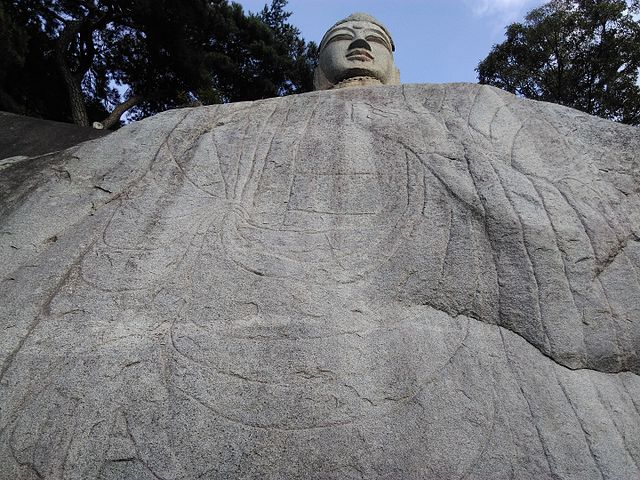
Jebiwon Buddha
Andong, Korea
The statue's body is incised into the rock, while the head is carved in the round. There are traces of red paint on the figure's urna and lips, and some ornaments on the neck. These neck ornaments are one indication that the figure represents Maitreya; this is the temple tradition and is also a usual identification for similar figures, of around the same date, that were created in various parts of the country. However, the statue's direction of gaze (West) and hand gestures (seen in this photo) suggest that the figure might alternatively represent Amitayus (Amitabha).
According to temple tradition, the statue was beheaded by a Japanese general during the Imjin War, and the head was later reattached. At any rate, the head today is separately attached to its boulder. Originally, the statue also had a mandorla, which at some point was broken off and lost. Traces of it can still be seen on either side of the figure's neck. There is also a crack on the figure's right (viewer's left) shoulder that is damage from a 2002 typhoon, although it cannot really be seen in this photo.


